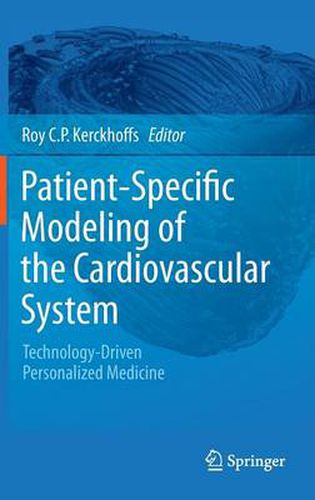Readings Newsletter
Become a Readings Member to make your shopping experience even easier.
Sign in or sign up for free!
You’re not far away from qualifying for FREE standard shipping within Australia
You’ve qualified for FREE standard shipping within Australia
The cart is loading…






This title is printed to order. This book may have been self-published. If so, we cannot guarantee the quality of the content. In the main most books will have gone through the editing process however some may not. We therefore suggest that you be aware of this before ordering this book. If in doubt check either the author or publisher’s details as we are unable to accept any returns unless they are faulty. Please contact us if you have any questions.
Peter Hunter Computational physiology for the cardiovascular system is entering a new and exciting phase of clinical application. Biophysically based models of the human heart and circulation, based on patient-specific anatomy but also informed by po- lation atlases and incorporating a great deal of mechanistic understanding at the cell, tissue, and organ levels, offer the prospect of evidence-based diagnosis and treatment of cardiovascular disease. The clinical value of patient-specific modeling is well illustrated in application areas where model-based interpretation of clinical images allows a more precise analysis of disease processes than can otherwise be achieved. For example, Chap. 6 in this volume, by Speelman et al. , deals with the very difficult problem of trying to predict whether and when an abdominal aortic aneurysm might burst. This requires automated segmentation of the vascular geometry from magnetic re- nance images and finite element analysis of wall stress using large deformation elasticity theory applied to the geometric model created from the segmentation. The time-varying normal and shear stress acting on the arterial wall is estimated from the arterial pressure and flow distributions. Thrombus formation is identified as a potentially important contributor to changed material properties of the arterial wall. Understanding how the wall adapts and remodels its material properties in the face of changes in both the stress loading and blood constituents associated with infl- matory processes (IL6, CRP, MMPs, etc.
$9.00 standard shipping within Australia
FREE standard shipping within Australia for orders over $100.00
Express & International shipping calculated at checkout
This title is printed to order. This book may have been self-published. If so, we cannot guarantee the quality of the content. In the main most books will have gone through the editing process however some may not. We therefore suggest that you be aware of this before ordering this book. If in doubt check either the author or publisher’s details as we are unable to accept any returns unless they are faulty. Please contact us if you have any questions.
Peter Hunter Computational physiology for the cardiovascular system is entering a new and exciting phase of clinical application. Biophysically based models of the human heart and circulation, based on patient-specific anatomy but also informed by po- lation atlases and incorporating a great deal of mechanistic understanding at the cell, tissue, and organ levels, offer the prospect of evidence-based diagnosis and treatment of cardiovascular disease. The clinical value of patient-specific modeling is well illustrated in application areas where model-based interpretation of clinical images allows a more precise analysis of disease processes than can otherwise be achieved. For example, Chap. 6 in this volume, by Speelman et al. , deals with the very difficult problem of trying to predict whether and when an abdominal aortic aneurysm might burst. This requires automated segmentation of the vascular geometry from magnetic re- nance images and finite element analysis of wall stress using large deformation elasticity theory applied to the geometric model created from the segmentation. The time-varying normal and shear stress acting on the arterial wall is estimated from the arterial pressure and flow distributions. Thrombus formation is identified as a potentially important contributor to changed material properties of the arterial wall. Understanding how the wall adapts and remodels its material properties in the face of changes in both the stress loading and blood constituents associated with infl- matory processes (IL6, CRP, MMPs, etc.